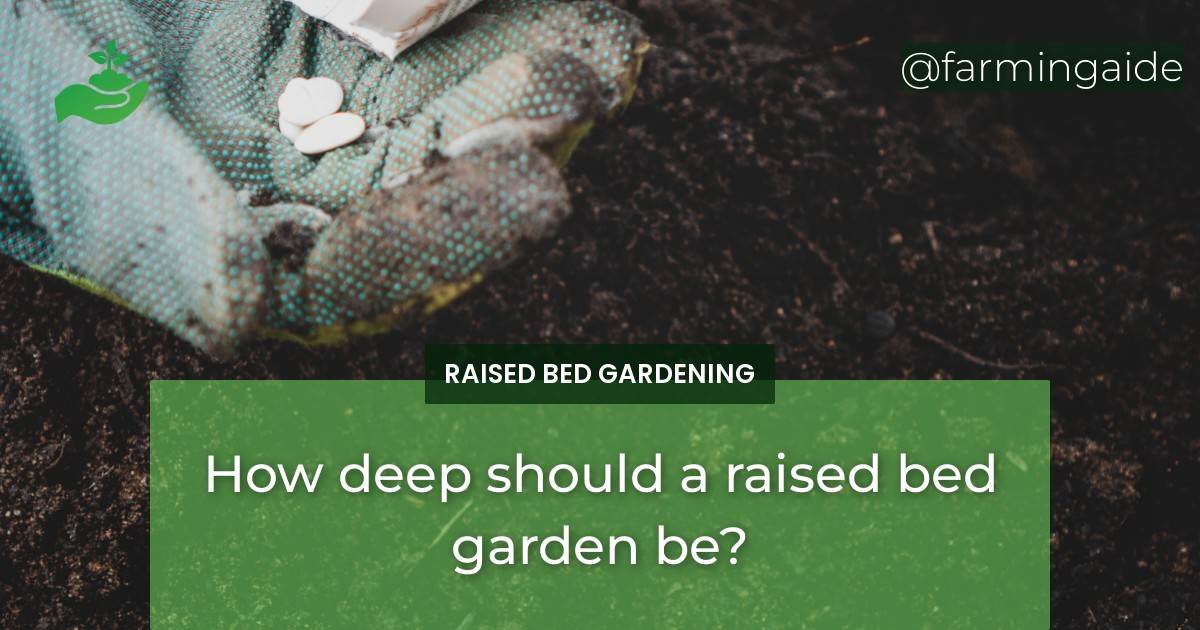A raised bed garden is a perfect solution for people who want to grow vegetables, herbs or flowers but have limited space or poor soil quality. One of the most important factors to consider when building a raised bed garden is the depth of the soil. The soil depth will determine how well the plants grow and develop, and it’s essential to choose the right depth to ensure your plants thrive.
Optimal soil depth for root development
Understanding root development in raised bed gardens
Before we dive into the optimal soil depth for a raised bed garden, it’s important to understand how root development works in this type of gardening. In a raised bed, the soil is contained in a box-like structure, which means that the roots have limited space to grow. The depth of the soil determines how deep the roots can penetrate and how much space they have to spread out.
Importance of soil depth for root development
The soil depth is crucial for root development because it affects how well the plants can access nutrients and water. If the soil is too shallow, the roots won’t be able to grow deep enough to reach water and nutrients that are deeper in the soil. This can result in stunted growth and nutrient deficiencies.
Factors affecting soil depth requirements in raised bed gardens
The ideal soil depth for a raised bed garden depends on several factors, including the type of plants you want to grow, the soil quality, and the climate. These factors will determine how deep the roots need to grow to access the necessary nutrients and water.
Recommended soil depth for different plants in raised bed gardens
Shallow-rooted plants
Shallow-rooted plants like lettuce, spinach, and radishes require a soil depth of 6-8 inches. These plants have shallow root systems that don’t need a lot of space to grow and can’t penetrate very deep into the soil.
Deep-rooted plants
Deep-rooted plants like tomatoes, peppers, and carrots need a soil depth of at least 12 inches. These plants have long, deep roots that require a lot of space to grow and reach the nutrients and water they need.
Medium-rooted plants
Medium-rooted plants like beans, peas, and cucumbers require a soil depth of 8-10 inches. These plants have moderate root systems that need some space to grow but don’t require as much depth as deep-rooted plants.
ALSO READ
Choosing the right depth for your raised bed garden
Considerations for selecting the depth of your raised bed garden
When choosing the depth for your raised bed garden, it’s essential to consider the plants you want to grow, the soil quality, and the climate. You’ll also want to think about how much effort you’re willing to put into maintaining the soil depth and how much space you have available.
Pros and cons of different raised bed depths
- Shallow raised beds (6-8 inches) are easier to fill with soil and require less maintenance, but they’re not suitable for deep-rooted plants.
- Medium raised beds (8-10 inches) are a good compromise between shallow and deep beds and can accommodate most plants.
- Deep raised beds (12 inches or more) require more soil and maintenance, but they’re ideal for deep-rooted plants and can produce higher yields.
Does the depth of a raised bed garden affect how I should layout my plants?
Yes, the depth of a raised bed garden can impact how you layout plants. Deeper beds are suitable for root vegetables and plants with deep roots, while shallow beds are better for smaller, shallow-rooted plants. Consider the depth when planning the layout of your raised bed garden to ensure healthy growth for all plants.
Tips for maintaining soil depth in raised bed gardens
Preventing soil compaction
Soil compaction can occur over time, especially if you’re stepping on the soil or using heavy equipment in the garden. To prevent soil compaction, avoid walking on the soil, and use raised beds that are narrow enough to reach across without stepping inside.
Adding compost and organic matter to maintain soil depth
Adding compost and organic matter to your raised bed garden can help maintain soil depth and fertility. Compost adds nutrients to the soil and improves soil structure, which allows roots to grow more easily. Organic matter also helps retain moisture, which is crucial for plant growth.
Strategies for rejuvenating soil in raised bed gardens with shallow soil depth
If you have a raised bed garden with shallow soil depth, there are several strategies you can use to rejuvenate the soil. These include adding organic matter, using a raised bed liner to create more depth, and using a planting technique called double digging to loosen compacted soil.


